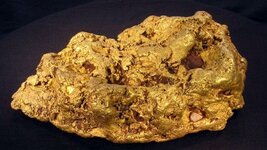Sheldon J
Hero Member
from and rest of the story at Eureka! X-rays detect gold faster and more accurately


Every year, Australian mining companies discard hundred of millions of dollars worth of gold. They're not doing it on purpose, it’s just that the standard industry technique of scanning mineral samples isn’t sensitive enough to detect small traces of the precious metal. Australia’s Commonwealth Scientific and Industrial Research Organisation (CSIRO) and Canadian company Mevex have tested a new technique using powerful X-rays that can detect these small trace amounts quickly and accurately.
The current industry standard used by mining companies for valuing gold ore is fire-assay, which is time consuming, requires the use of heavy metals such as lead, and involves heating samples to temperatures of up to 1,200° C (2,192° F). According to the CSIRO’s Dr James Tickner, gold processing plants will generally only recover 65 to 85 percent of gold present in mined rock using this method.
He points out that last year Australia produced over AUD$10 billion (approx. US$9.1 billion) worth of gold, with a typical plant producing around AUD$1 billion (approx. US$910 million) of gold annually. So improving the detection rate by even a few percent would allow the recovery of gold worth hundreds of millions of dollars.
Dr Tickner was the project leader of a pilot study that examined a new technique called gamma-activation analysis (GAA), which involves blasting mineral samples with high-energy X-rays like those used in medical imaging. The X-rays make the gold radioactive for a few seconds, which allows it to be picked up with a sensitive detector. The results of the study showed that GAA was two to three times more accurate than the fire assay method at detecting gold in a mineral sample.



